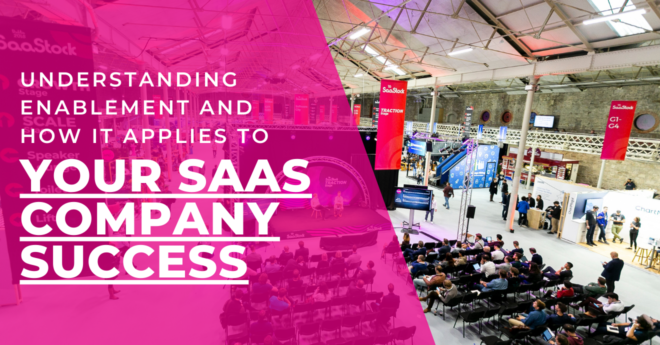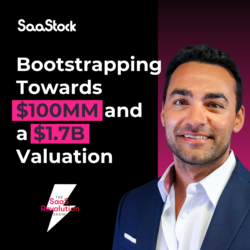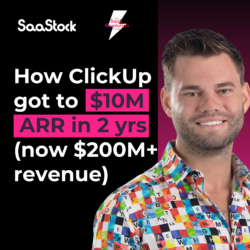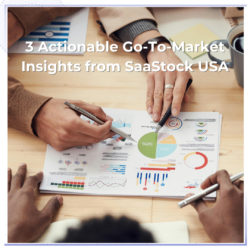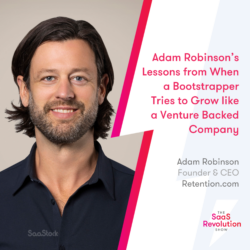This article is written by Epic Presence.
Sales growth is essential for SaaS startups ready to scale. Companies need to prove that existing customers love their products and that the features are worth investing in. However, after the first round of sales, some companies struggle to scale. This is where enablement comes in.
Enablement has a place in your SaaS organization. It is used to align sales teams with marketing objectives while serving as an essential tool for managing employees. If you don’t have an enablement specialist working for you, your SaaS startup might already be behind. Learn more about this concept and how it helps businesses scale strategically.
What Is Enablement?
Before you can hire for enablement, you need to have a clear picture of what these experts do and how they can drive your organization forward. Otherwise, you are hiring a figurehead or another sales representative.
“Keeping up with the Joneses won’t do you any good,” writes Stephanie Middaugh, director of enablement at learning platform WorkRamp. “Hiring Enablement professionals without a clear understanding of their priorities and initiatives will be a recipe for failure – not only for the person you hire but also for your company.”
Enablement professionals ensure everyone is aligned with the company vision. They direct every business activity back to key goals and objectives within the startup. They focus on the startup’s mission and keep an eye on the future — driving the company forward by pairing the necessary resources with existing talent and capital.
“Sales enablement and customer enablement are slightly different, but it’s all about the same thing: it’s about making sure that everything you do can scale,” says Eléonore Crespo, co-CEO and cofounder at business planning platform Pigment, who is speaking at SaaStock in October.
Enablement has a place in every part of your company, from sales and customer service to product development and employee management. Consider how Alexander Heinle, marketing lead at employee enablement platform Zavvy, describes how enablement can help employees:
“We set expectations based on the resources that employees already have instead of meeting them where they are to provide them with the tools and resources they need to ramp up productivity.”
This perfectly describes the job of breaking down barriers and providing resources with an eye on the future. Once you have an idea of what enablement looks like and how it can help your organization, you can move forward with implementing it across the board.
Use Enablement to Align Your Employees
To better understand enablement and how it can help your startup, look at where this concept originated and why it has grown so quickly over the years. Brandon Vasciannie, senior marketing manager at sales enablement solutions provider Bigtincan, took a deep dive into the origins of enablement.
“We can trace the origins of sales enablement back to 1999, when John Aiello, a former brand manager at Miller Brewing Company, and Drew Larsen, a telecom consultant, took a new approach to sales operations and management,” Vasciannie writes. The two set out to solve three sales problems:
- An incomplete or inconsistent messaging between sales and marketing.
- A lack of accurate information about products and customers.
- The sales processes are unrepeatable.
These problems might sound familiar within your SaaS company. You might feel like your marketing and sales teams are disconnected, which means hard-earned leads are lost or sales teams have to pivot to close deals. You might also see that existing sales processes that helped you reach your current size are ineffective as you start to scale. Enablement teams build bridges across departments as a way to plan for the future.
Enablement professionals also have a role on the product development side. They communicate the needs of customers and advocate what needs to be prioritized and how changes to the tool can impact long-term user satisfaction.
“Designing for end users means having a deeper understanding of who they are and what they do,” says Alon Ghelber, B2B marketing consultant. “Ultimately, this means that customer enablement should drive product-led growth. Put money in the backseat and listen to the needs of real people first, committing to product improvements that solve their problems effectively.”
The person (or people) you hire for enablement will be involved in most aspects of the company, from employee onboarding to customer service.
Hire Enablement Experts Early
You don’t have to reach a certain size to benefit from enablement. As soon as your company is ready to scale — or even if you are simply preparing to scale — it is time to bring on an enablement professional.
“We always hire too late on enablement,” says Crespo. “You need world-class talent to lead your enablement.” She says this is important regardless of whether you have a complex product targeting enterprise businesses or if you are a smaller company with a simple tool.
By setting clear goals for what your enablement employees do, you can understand how many people you need working on this aspect of your business. You can hire at appropriate levels and have the right resources dedicated to scaling your business.
“Some firms may only have one person who is responsible for enabling the entire organization on a full- or part-time basis,” writes the team at Brainshark. “Others may have multiple dedicated practitioners who are each focused on a piece of the sales enablement strategy (such as a dedicated sales coach or content creation specialist).”
It’s okay if your SaaS startup doesn’t get its enablement strategy right immediately. You may need to adjust the roles of your employees or bring on different people who can prepare your company to scale.
Enablement Empowers You to Scale
Enablement inherently helps companies scale by making them more effective. These professionals break down barriers that are keeping companies from growing. For example, an enablement expert can merge the sales and marketing teams so they are aligned with each other.
“Sales teams no longer blame marketing for creating inefficient content, and marketing stops asking why sales operations teams don’t use their resources,” says Elay Cohen, cofounder and CEO at sales enablement platform SalesHood. “Instead, it elevates best practices and everyone is aware of and invested in on-brand company messaging, the customer experience, performance analytics, quota attainment and sales success.”
However, your enablement team does more than just put out fires between sales and marketing. Enablement professionals also work toward the future and execute plans to help companies scale.
“It’s important to assemble a sales enablement team as early as possible rather than waiting until issues arise with your sales process,” says Jeff Rosset, founder and CEO at scale-as-a-service platform Sales Assembly. “This way, they can scale alongside your sales team.”
Enablement is not a band-aid solution when you are frustrated with your sales team. It is an integral part of your business operations as you start to double and triple your staff. Establishing enablement when you have 20 employees will help you develop good habits that protect your company when you have 200 team members. Enablement can also help you reach that milestone faster.
“If you can find someone that can not only help with the onboarding of a specific space but also make sure everyone is aligned with the mythology and culture, that will give you two times the acceleration on everything you do,” says Crespo.
The transition from a small startup to a growing SaaS company is difficult. You need to develop internal processes for your employees to thrive while staying true to your product and customer solutions. Enablement works to champion your mission and creates a plan to achieve your future goals. By investing in enablement today, you are laying the groundwork to scale and become a leader in your field.
Our return to Dublin will bring with it many ways you can connect with likeminded people and peers in SaaS. Find out 10 ways how we’re facilitating human connections (not just meetings) at SaaStock 2022 in Dublin. Read our blog post.
Get your tickets to SaaStock 2022 in Dublin this October, to experience:
“The best SaaS conference for SaaS founders, VCs and execs in Europe. Period.” – Christoph Janz, Managing Partner, Point Nine
